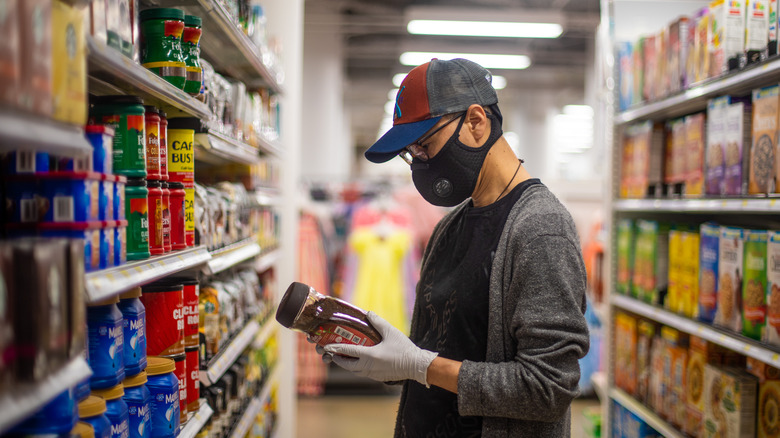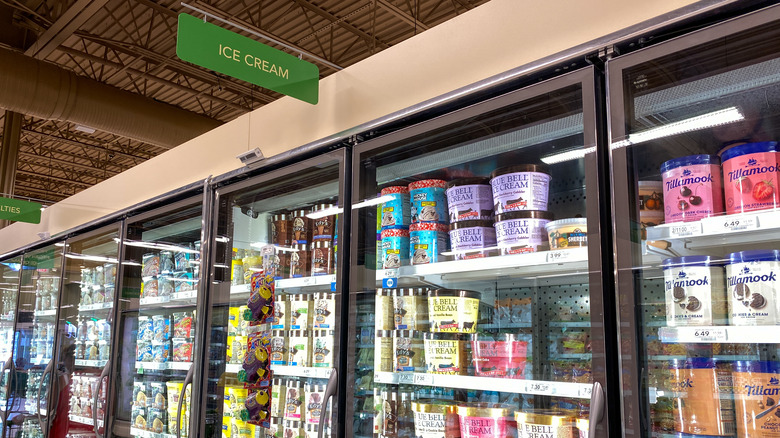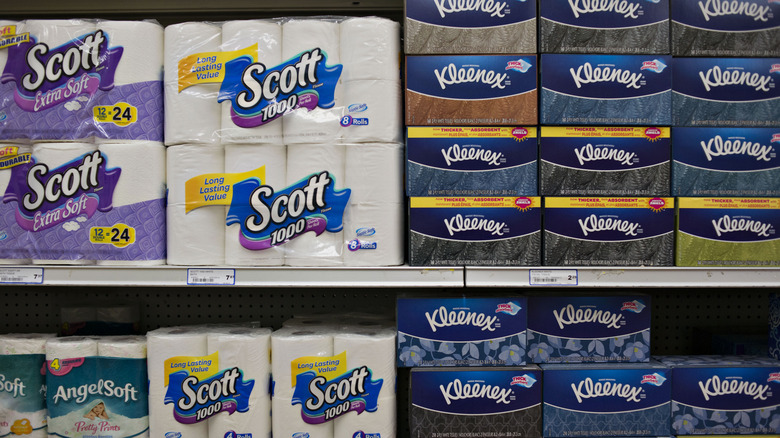Here's Why Your Favorite Packaged Foods Have Gotten Smaller
If you used to have trouble wolfing down a Snickers bar, or if a box of cereal seems to disappear faster than it used to, and you haven't gained or lost any inches, we're here to tell you that you're not imagining things, and that you're experiencing the latest impact of an economy where prices of raw materials and ingredients are at highs they haven't seen in decades: shrinkflation.
In an op-ed for Bloomberg, University of Georgia history professor Stephen Mahm says the phenomenon first took shape in the 1960s and 1970s, "when manufacturers confronting runaway inflation tweaked packaging rather than hike prices." He noted that "[a]t first, the practice attracted relatively little notice: It's difficult to discern changes in unit prices when they're camouflaged in different-looking boxes and bags." The practice got called out by humor writer Art Buchwald, who praised manufacturers "for devising new methods to make the product smaller while making the package larger."
Money Guru provides a graphic to help us imagine how shrinkflation works. Among its examples — a Snickers bar, which went from 58 grams (2 ounces) to 45 grams (1.58 ounces), representing a drop of 17%; and a 165-gram (5.8 ounces) bag of M&M's that now weighs in at 140 grams (4.9 ounces).
Shrinkflation is triggered by several factors
Shrinkflation isn't a problem that is unique to American consumers, because other markets see this happening, too. Bryan Roberts, a retail analyst for UK firm Shopfloor Insights, tells The Guardian that the method is one preferred by retailers. "No one wants to put prices up but if you look at the pressures coming down the track, it is hard. There is a combination of factors: oil, which used in a lot of products, is up through the roof; fuel, the issues with CO2, which has meant significant price rises for producers of fresh food and fizzy pop, labour shortages and wage rises — those costs are now in the supply chain," Roberts said, adding that "[r]etailers and suppliers have a specific price point they want to hit, say £1, and may have to gear packaging or pack sizes to hit that £1."
Harvard Business School professor John Gourville explains to The Wall Street Journal that shrinkflation isn't even as difficult to pull off as it might look. "There are sizes that people remember, like a half gallon of ice cream. Once you break from iconic sizes, it's pretty easy to move from 13 ounces to 12 ounces," he said.
Shrinkflation is more deceptive than a price increase
But consumer advocates like ConsumerWorld.org founder Edgar Dworsky consider shrinkflation to be more underhanded than outright raising the price of items. "The manufacturer knows that most consumers are not net-weight conscious. They don't look at the fine print on the product box, so they won't even realize they've been snookered," Dworsky told CBS Radio affiliate KDKA (via CBS Pittsburgh).
He also warned that items that were more likely to be affected by shrinkflation in a way that flew below many consumers' radars were paper products, saying that "[o]ver the years, paper towels — each sheet has gotten a little narrower, a little shorter. Same thing with toilet paper."
Consumers might feel powerless to do anything but accept what might seem to be an inevitability, but Dworsky says it's easy to go shopping even when shrinkflation lurks. He advises people to look at the unit cost of the items they buy — and then make decisions based on that. "That's on the grocery shelf, the price per ounce you're paying. If you get to know that, you'll be able to spot increases even if they're done through shrinking the product," he said. And this way, you can try and get as much bang for your buck.


